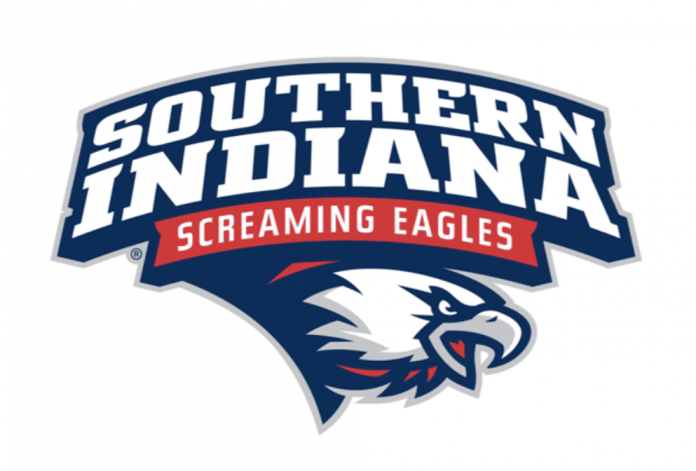The Indiana State Bar Association is recommending against a proposal to allow graduates of a law school affiliated with Purdue University to become licensed to practice in the Hoosier state.
Concord Law School, part of Purdue University Global, has asked the Indiana Supreme Court to allow its graduates to go through the licensure process, which includes sitting for the state bar exam. A working group assembled to review Concord’s proposal could not reach a consensus but in a report issued in February listed the pros and cons of revising the court rules to enable the Concord graduates to get admitted to the Indiana bar.
As the public comment period approaches the Friday deadline, the ISBA, a professional organization of lawyers and judges from across Indiana, released a statement Monday in opposition to the Concord proposal. The ISBA was concerned about the law school’s accreditation.
Indiana allows only graduates of law schools accredited by the American Bar Association to sit for the bar exam. Concord is not ABA accredited, in part because the curriculum is fully online and does not have a physical location. The school is accredited by California, which has its own accreditation process, and its graduates can take the California bar exam.
ISBA noted Indiana does not have a process for evaluating the standards of non-ABA accredited law schools. Also, the state has no system to review the standards used by non-ABA entities, like California, to accredit law schools.
“ISBA’s opposition is rooted in its belief that a quality legal education is vital to the high-level practice of law, which better serves Indiana’s citizens,†the association stated. “The best way to ensure quality and consistent legal education is through a reliable accreditation process.â€
Allowing Concord’s graduates to sit for the Indiana bar exam would require the Supreme Court to amend three rules in its admission and discipline code. Currently, Indiana permits only graduates of ABA-accredited law schools to obtain a license to practice in the state.
Richmond attorney and ISBA president Amy Noe Dudas emphasized to The Indiana Citizen that while the conversation about the proposed rule change has broadened to include Concord and online legal education, the proposed amendments are only about who is doing the accreditation.
“We were simply not comfortable approving a blanket statement that anybody that accredits law schools, those schools’ graduates may take the Indiana bar, just because we don’t know who all those potential accreditors are and what their standards are,†Dudas said.
A joint statement from Purdue and Concord agreed ensuring a quality legal education is paramount. However, they said the proposed amendments to the rules will open the door to just the graduates of Concord.
“It is regrettable that the Indiana State Bar Association opposes the proposed rule amendment, notwithstanding the fact that its position admittedly was not based on ‘a direct evaluation of Purdue Global’s Concord Law School,’†the joint statement said. “As a practical matter, since Concord will be the first key test of meeting the narrow parameters of the amended provisions, an evaluation of Concord’s quality is critical to an evaluation of the proposal. Purdue is confident that anyone who does evaluate Concord would come away impressed with what it and its graduates have achieved.â€
Lawyer shortage
Judge Nancy Vaidik of the Court of Appeals of Indiana chaired the Purdue University Global Concord Law School Working Group, which evaluated the proposal and issued a report in February.
She conceded the question of opening the Indiana bar to Concord graduates is a difficult one to answer but she is open to the idea. Vaidik said she is impressed by Concord’s dean, Martin Pritikin, and has confidence in the law school because it is part of Purdue University, which has a good reputation and is trusted across the state.
“In my opinion, why not try it,†Vaidik said, noting the demand for virtual learning is growing. “Let’s be at the front of the bus instead of the back of the bus and see if it works. If it doesn’t work, it doesn’t work. If it does work, then we have more lawyers in areas that need to be served by lawyers.â€
A key part of Concord’s pitch to Indiana is that the school could help the state address its shortage of lawyers. The school has made similar arguments in the past when it unsuccessfully approached Arizona and Connecticut about allowing its graduates to sit for their bar exams.
According to Concord, the online platform will enable Hoosiers to stay and study for a law degree in their rural communities, then remain in those towns to establish a practice and serve their longtime neighbors. Purdue University reiterated that assertion in a Q and A sent to The Indiana Citizen.
The university stated that the closure of Valparaiso Law School in 2020 has left Indiana with just three law schools—Indiana University Maurer School of Law, Indiana University Robert H. McKinney School of Law and Notre Dame Law School. And currently, Indiana has one of the fewest lawyers per capita of any state, a condition that is even more acute in rural areas since the bulk of Indiana attorneys practice in Indianapolis.
ISBA acknowledged Indiana needs more attorneys as well as the growing prevalence of online education.
“ISBA understands that Indiana has an attorney shortage, especially in rural communities. It also understands that online legal education may be an affordable avenue for underrepresented populations. Online education is an increasing reality, and a carefully designed online law program may very well be of sufficient quality to meet other important accreditation standards. The ABA appears to be moving in that direction with its approval of certain hybrid J.D. programs as well as some recently approved fully online pilot programs associated with existing accredited law schools. “
Still, ISBA continued, a majority of its members who responded to a request for feedback on the proposed rule changes were “overwhelming opposed.†After researching the issue and reviewing the member feedback, the ISBA board of governors voted unanimously to oppose the proposed amendments.
“In conclusion, unless and until Indiana puts resources in place to become an independent accreditor of law schools or creates a body to evaluate the accreditation standards of other states, the ISBA supports maintaining our reliance on the ABA’s accreditation standards and compliance monitoring,†the association stated. “Therefore, we oppose the rule changes as proposed.â€
Purdue and Concord countered what they view as ISBA’s assumption that the ABA can assure quality. They pointed out the ABA standards include requirements like having a physical campus and law library that just “drive up costs and restrict access without promoting quality.â€
Also, Purdue and Concord noted the working group carefully evaluated the accreditation standards of California, which accredits Concord. Many of the California requirements are the same as the ABA.
“The Association’s opposition is understandable, given that many in the legal profession are reluctant to experiment with change, perhaps justifiably so. But Purdue believes that the significance of the State’s access to justice crisis warrants taking the relatively low risk of providing the opportunity for licensure to Concord graduates. If the proposal is adopted, we hope and expect that, in time, the attorneys of Indiana will come to agree.â€
Addressing concerns
While the working group could not decide whether to support or oppose Concord’s proposal, the members did agree on a list of recommendations. The list of 16 recommendations is meant to ensure Concord students received a “high-quality professional educational experience†if the Supreme Court approves the changes to the rules.
Vaidik said Concord’s virtual program is now not so suspect since the pandemic in 2020 and 2021 forced many law schools to switch to an online format, demonstrating that classes as well as activities like mock trials could be done remotely. The demand for remote learning is growing. St. Mary’s University School of Law in Texas recently launched the first ABA-accredited online J.D. degree program and had 791 applicants for the 27 slots available.
Noting Concord has been offering online legal education for 25 years, Vaidik took a contracts class and a trial advocacy course to sample the school’s curriculum. She described the classes as “excellent.â€
“I see it as another tool,†Vaidik said. “Hopefully, it will be a tool to keep lawyers in rural areas and other areas in the state that are legal deserts.â€
Even so, the working group crafted the recommendations to remedy some of the concerns about Concord’s online program.
To foster a sense of community and collegiality that naturally develops among law schools students when they attend a brick-and-mortar law school, the working group advised Concord students intending to sit for the Indiana bar be required to spend a week-long orientation and one long weekend annually at Purdue University’s campus in West Lafayette.
Also, the group recommended the law school be required to expand its legal incubator program so students in rural Indiana can connect with local attorneys and gain mentors.
In regard to the curriculum and training of the students, the group advised granting Concord provisional status for a period of time in order to give the legal profession the ability to monitor the outcomes and student performance before deciding on permanent approval. Also, the group recommended Concord achieve an Indiana bar passage rate of 75% and offer a way for students to earn a paralegal certificate so they can still get a law-related job if they do not complete the J.D. program.
Purdue and Concord in the Q and A acknowledged the law school has a higher attrition rate than traditional law schools, but they attributed the disparity to their students having more demanding schedules. Concord students are often juggling a full-time job and family commitments, which means they cannot always fulfill the requirement to devote 25 to 35 hours a week to their law school studies.
The law school is implementing a new pre-admission program and a new intervention initiative to provide additional support and skills training to the students.
As for the bar passage, Purdue and Concord expressed confidence their students would achieve the working group’s 75% threshold.
Currently, Concord graduates are only able to sit for the California bar exam, which requires one of the highest scores to pass in the country. The law school said its bar passage rate for first-time takers of the California test has been nearly 50% in the last two years. Since Indiana’s passing score is lower than California’s, Purdue and Concord contended the law school’s first-time pass rates in the Hoosier state would be 10 to 20 percentage points higher.
Noe Dudas said allowing Concord graduates to sit for the state bar carries rewards and risks. Indiana could grow its legal community and gain more lawyers who come from diverse backgrounds and bring different perspectives. However, even though Concord is comparatively less expensive than a traditional law school, graduates might still struggle with debt if they cannot find employment that pays them commensurate to their level of education.
Moreover, passing the bar does not assure the individual will be a skilled lawyer.
“I think there’s a reason our current rule says you must go to an ABA-accredited law school and pass the character and fitness exam and pass the bar in order to become a lawyer in Indiana,†Noe Dudas said. “I think quality legal education is important to the practice of law in ways that go well beyond performance on the bar exam.â€
Some other states do allow for non-ABA accredited law schools to sit for their bar exams but on the condition that the applicants must have passed a bar in another state and practiced law for a number of years.
Noe Dudas said that rule change might be more palatable to ISBA. At least those applicants would have a track record of their qualifications and abilities. However, Vaidik was not convinced installing additional hurdles for Concord graduates to clear before sitting for the state’s bar exam would be good for Indiana.
She said lawyers in that situation would likely practice in Indianapolis once they earned an Indiana law license. The current proposal would possibly cultivate attorneys in Indiana’s rural communities, where they could study online without disrupting their entire lives, then stay to practice.
“This is an experiment. This is an innovation,†Vaidik said. “This is something that we hope works. And I’m pretty confident it will with Dean Pritikin at the helm and Purdue backing it. Let’s try it, but nothing ventured, nothing gained.â€











